A decade ago in 2011, long before metaverse became a recent hype, Saudi collector Basma AlSulaiman already established a virtual museum, Basma AlSulaiman Museum of Contemporary Art (BASMOCA), showcasing her private collection of contemporary Western, Middle Eastern, and Chinese artworks. It allows visitors from anywhere in the world to create avatars and interact with one another in the museum — the first of its kind at that time. From her first collected work by David Hockney to her latest acquisition of a work by British Nigerian artist, Tunji Adeniyi-Jones, Basma has amassed 800-plus artworks from various corners of the world. Basma was the first woman to receive an award from the Saudi government in 2014 for her contributions to the country’s art and cultural spheres. Basma dedicates her art collection to her beloved son, Mohammed Al Juffali, who passed away in 2012.
LARRY’S LIST had an in-depth conversation with Basma AlSulaiman about her collecting journey, why it is important for her to meet the artists in their studios, the ideas behind the current show of her collection “What Lies Within”, and how she established BASMOCA in 2011. Besides, she also shared her visions for BASMOCA and her art collection in the upcoming years, as well as three emerging Saudi artists we should watch out for.
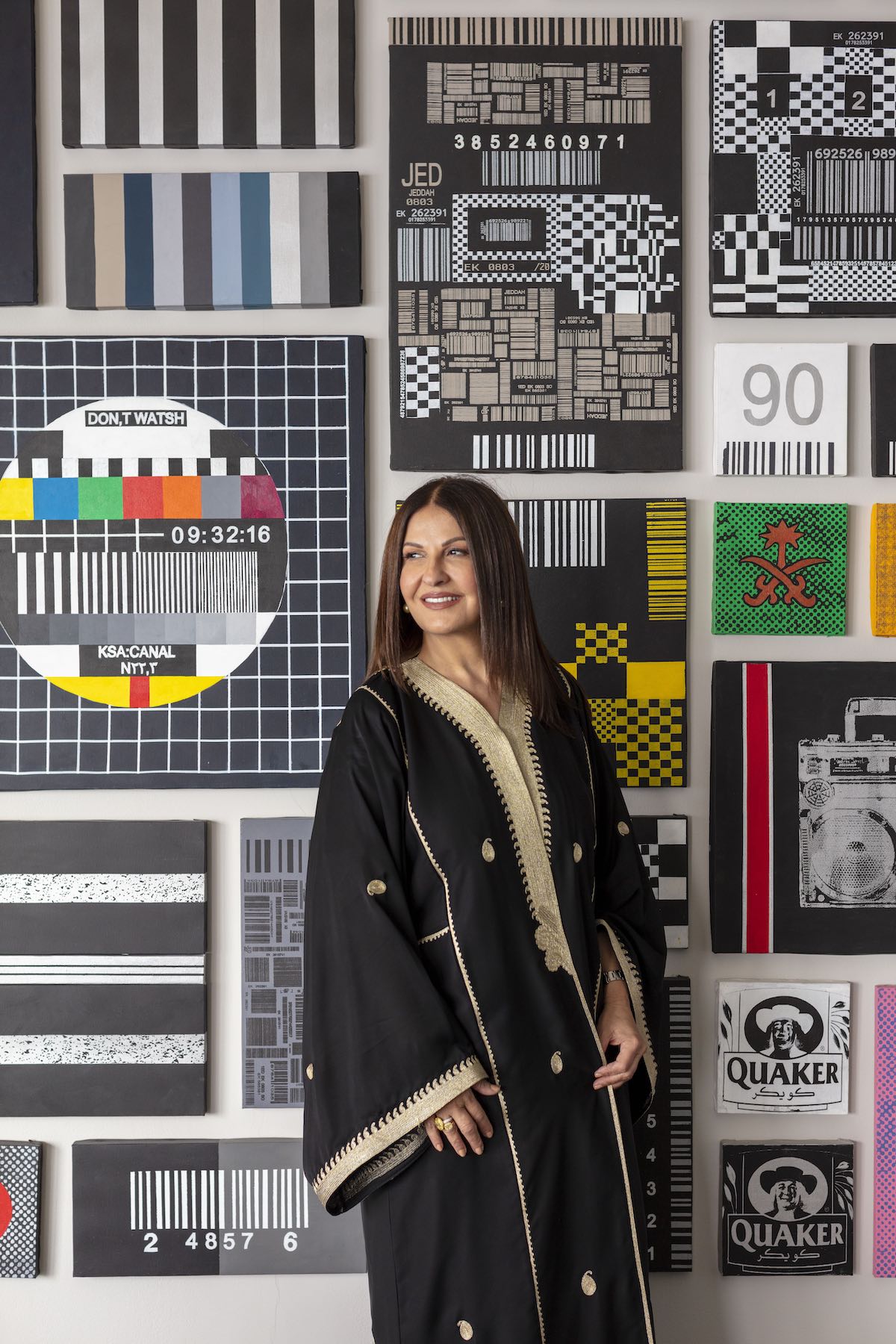
Collecting
What inspired you to start collecting art? What is your main motivation of collecting art?
Well, it’s a long story that started at a young age. I believe that collecting is a gene that we all have no matter what you are collecting, be it art or stamps or cars or whatever; it is a kind of affiliation that you have with certain things. From the very beginning, collecting was part of me. Then, it became much more evident when I started traveling and visiting different museums as a teenager. I can still recall vivid memories of two in particular: the Louvre Museum in Paris and the Prado Museum in Madrid. Both of them had such a strong impact on me — you stand in front of those masterpieces, beautiful images, and you start to understand the concept behind it, the patronage. I think this is where it all started to make sense to me — there is somebody that sponsors this, and this is the result of it. So I started exploring with the concept of collecting from an early age; and then, after I got married and I started traveling more extensively, I was more exposed to galleries, art shows and so on, and this is where I started indulging my passion, collecting and looking at art in a more focused way.
When did you fall in love with a piece of art? Was it contemporary art or like what you described, maybe in Louvre or in the Prado?
The first piece of art I fell in love with was a work by the Saudi artist Safeya Binzagr when I was about nine years old. I was at an exhibition of hers with my mother, and I would not move from that painting until my mother bought it! Then, I also became drawn to Renaissance paintings, like the Venus and all these beautiful ornate pictures that are drawn so intricately and beautifully. The more you see this quality of artwork, the more it develops your eye to beautiful things. I was very fortunate to be able to visit a lot of those museums, and this was a crucial stage of my journey.
Then, the switch happened around the 90s when I started going more to America and England and looking at a different kind of art, which was the contemporary art at that time, and it was at its beginning. What really was the turning point was this show in the Royal Academy of Arts called “Sensation”, which opened my eyes to a totally different form of art, which is more conceptual, more about thoughts and ideas. That was the beginning of the change in my life.
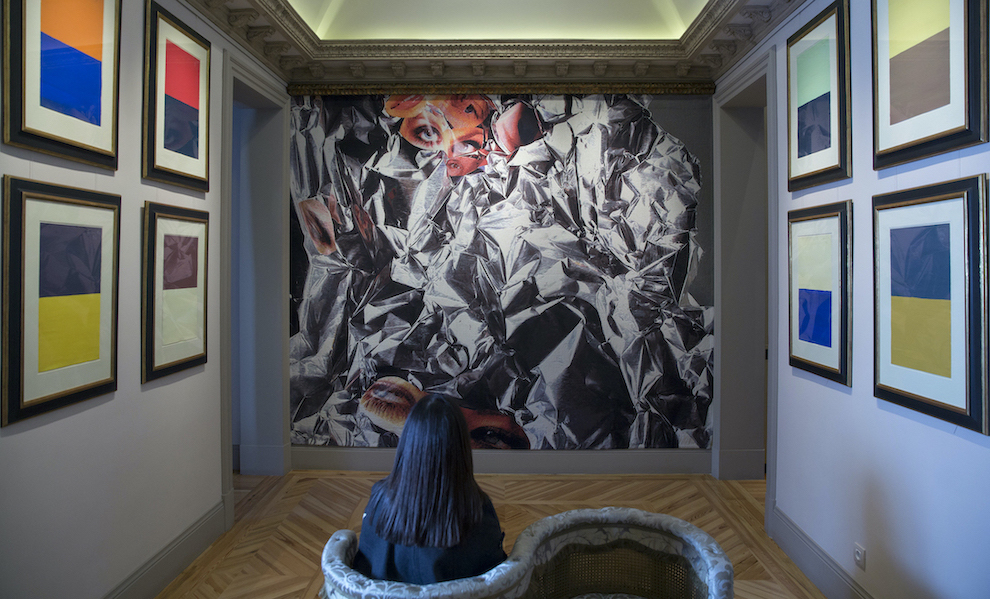
And now, throughout the years, you have collected many works. Have you observed what type of art that may have continuously attracted you, or is there a theme in your collection that unites different works together?
I’m a very curious person by nature, and like to be exposed to different cultures and different ways of thinking. Therefore, you find work from different parts of the world in the collection: from South and East Asia, Africa, America, and Europe; and it is the variety which I find so interesting. The aim of my collection, or even my own understanding of art, is always about communicating, sharing, and building bridges. So learning through art about different cultures is my way to learn about people, their ways of thinking, and their challenges through art. For instance, this is what drew me to China — when I started collecting Chinese art back in the early 2000s, it was so fresh and original. This was just at the beginning of the rise of contemporary art in China, and I felt it would go on to make a huge impact on the art world. This was, for me, a moment to start learning about their history, ambition, dreams, and challenges. It was just after the Cultural Revolution, so it was a very interesting period to learn about through art. My daughter was working and studying there, so I went to live in China too. We were living in Shanghai, which gave me kind of a proximity to the artists, so I was able to visit, to talk to them, during the early stages of the development of Chinese contemporary art.
Talking about artist studios, so you have visited quite some artist studios, and like what you mentioned, you met quite some artists, for example, in China. Why is it important for you to meet the artists who created the artwork?
In contemporary art especially, there are a lot of things behind the work — thoughts, ideas; a part of the artist is in the work as well. Therefore, if you get to know the artists, the way they think, how they translate their ideas into the work that they are producing, it eventually changes your perception of the work. It has always been a priority for me to meet the artists as much as possible – not all artists were accessible, but I met as many as I could – and I believe it is very important to understand the work that you are committed to or that you wish to buy.
I can understand that meeting the artist allows more direct interaction with them, which will have some influence on or provide added perspectives to our appreciation of their artworks. Any special memories or stories among your encounters with artists that you would like to share?
In London, I met the Ghanaian artist El Anatsui who creates beautiful murals and large-scale tapestries. I met him with his gallerist, but I had also come across him before at the Venice Biennale when he had covered one of the palaces with his tapestry. It was truly awe-inspiring because you approached the palace, and you see it all covered with this tapestry made out of bottle caps; the whole thing was twinkling because of the reflection of the light on the various colors. It was a magnificent sight!
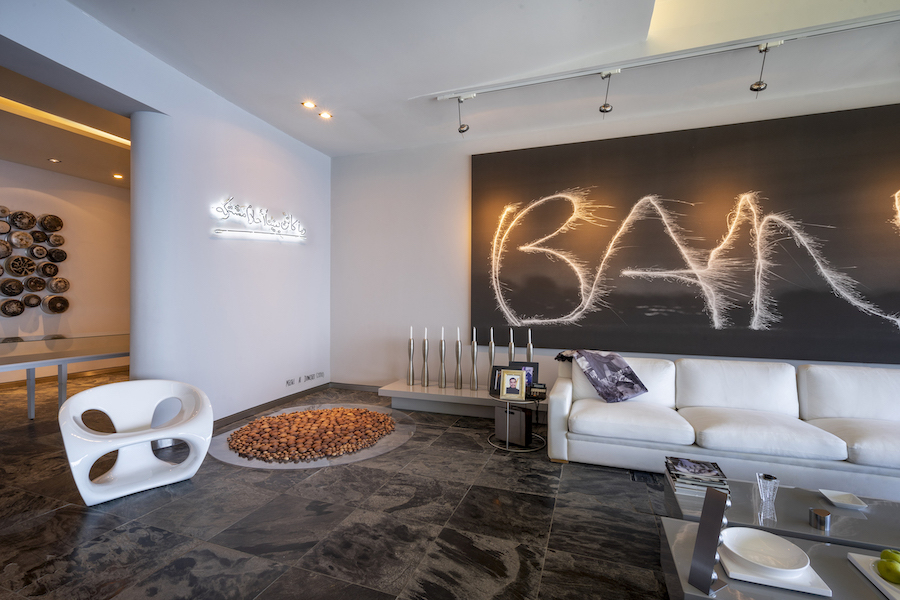
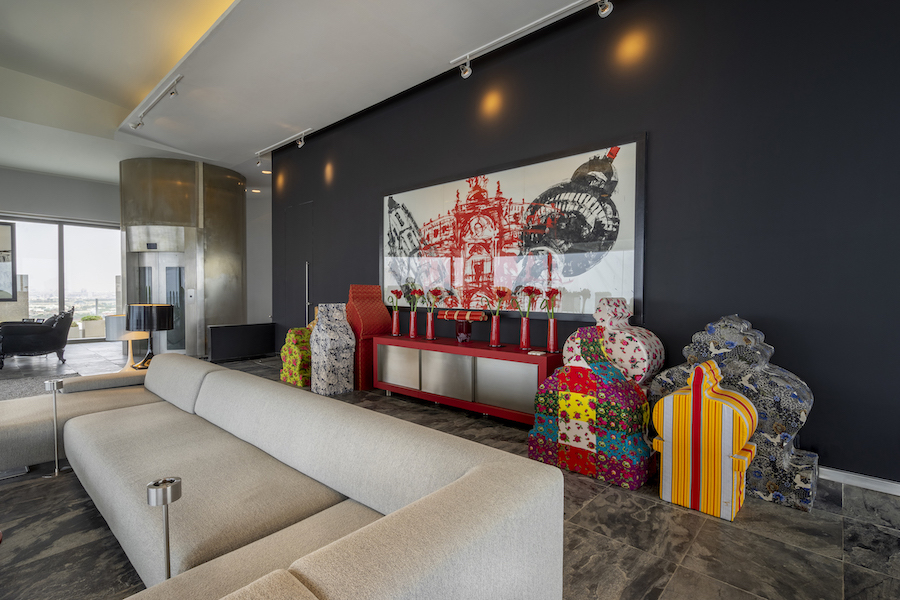
How many artworks have you collected in your collection so far?
I have 800-plus artworks from different parts of the world. They belong to two parallel collections: one international, and one Saudi-focused.
What was the first work that was in your collection and what was the latest one?
My first one I bought in New York, and it was totally without any background knowledge of the artist; I simply fell in love with the image! It was “Caribbean Tea Time” by David Hockney.
Then, very recently, I bought a piece by Tunji Adeniyi-Jones, a British Nigerian artist, which explores identity, heritage and memories.
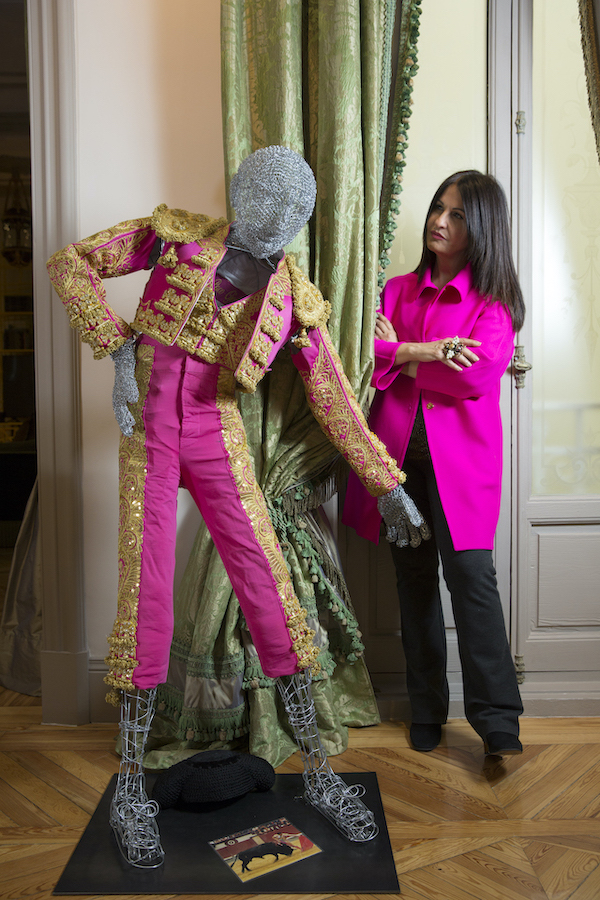
So you have accumulated quite big a collection and are very generous in sharing the collection. You have loaned works to various museums worldwide. How is the experience so far?
I focus on lending Saudi art to museums as I feel I have a role to play: I want to share my Saudi collection with the world because I am a strong believer in Saudi art; it has a distinct story to tell — there are certain subjects that we always go back to in Saudi art, such as identity, spirituality, and so on. I felt that the rest of the world had relatively little knowledge of Saudi Arabia, and there are so many stereotypes associated with it. The way around this was to initiate a cultural exchange, so you open the minds of people to our part of the world in a soft and easy-to-understand way. I am proud to have loaned pieces to the British Museum, the Institut du Monde Arabe in Paris, and I also lent a work by El Anatsui to 1-54 Contemporary African Art Fair in London.
Here I would like to add that all my work in art — I do it in memory of my son. I lost my son when he was at a young age, and I commemorate him and his legacy through art with all my exhibitions, all my donations, all my loans — all in memory of him.
I am sorry for your loss. But then you have transformed the energy of your loss into something contributing and bringing value to others and society. That’s very beautiful and touching.
Exactly. Because I always felt that his memory for me is a light to joy and happiness, to not be sad. It should be something positive — to move on, to continue to contribute, to share all these meanings. I find solace when I share my collection.
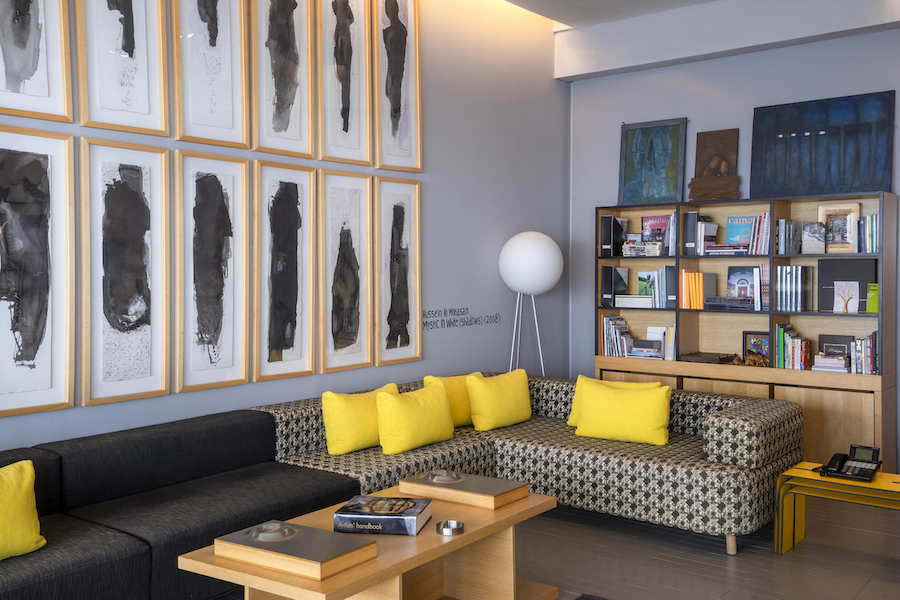
That’s really meaningful. Then, let’s move on to also talk about this show of your collection “What Lies Within” just opened this month? As you just mentioned that you also focus a lot on exhibiting your collection.
Having exhibited my collection via the virtual museum for many years, I began to feel that it was time to show it physically. Fortunately, I was then approached by the Royal Commission for AlUla (RCU) – the location where the exhibition is taking place – with this fantastic opportunity. They are initiating a program to celebrate the contribution of patrons of art and collectors from Saudi Arabia, and I’m the first one to be given this opportunity. It’s like a dream come true! All I do in my life is about sharing, and this is a chance to share my collection not only virtually, but also in the physical world.
It is a show of Saudi artists of the past 20 years. They represent a prominent generation that made the change from the modernist to the contemporary era. I collected iconic pieces which record history and capture moments in that transition. Each one of these pieces is an important work for the artists themselves because it either represents their practice as whole, or otherwise marks an important moment in the artist’s evolution. One of the works is “The Black Arch” by the Saudi artist Shadia Alem, which was presented for Saudi Arabia’s debut participation at the Venice Biennale in 2011. It is, therefore, very important for our art history, marking a pivotal moment.
Additionally, many of the pieces on show are commission-based for my collection. Whenever I meet an artist whose concept and style I like, I work with them closely and encourage them to produce art that is neither traditional nor conventional. They, therefore, have free reign to think, to create, to do whatever they want to do. Thus, the collection has a mixture of iconic pieces, of commission-based pieces — and they are all a record of these past 20 years.
Moreover, as much as it’s important for the international world to see the collection, it is very significant for the local public as well. It’s inspiring when you see what serious work these artists put their heart into across the past two decades. I am really happy to be able to share that.
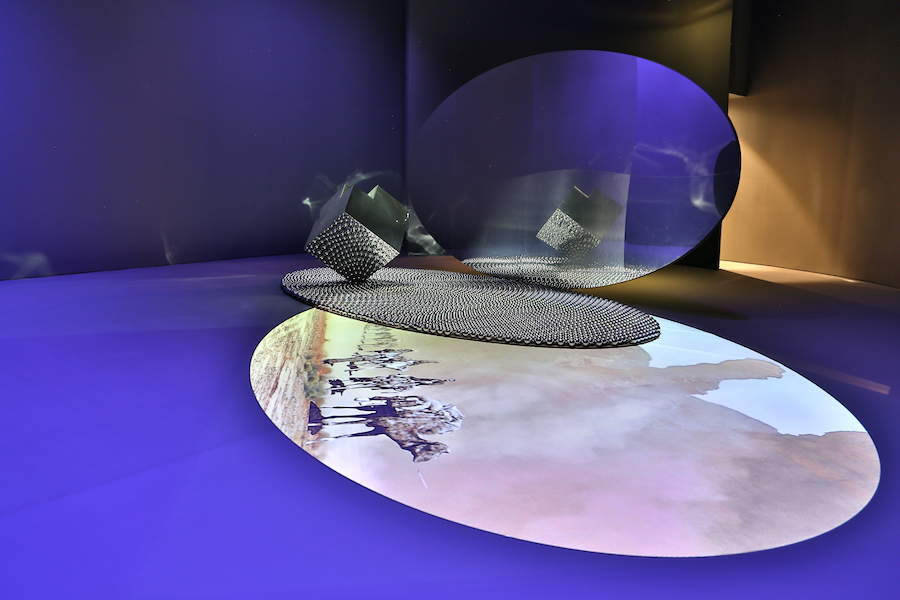
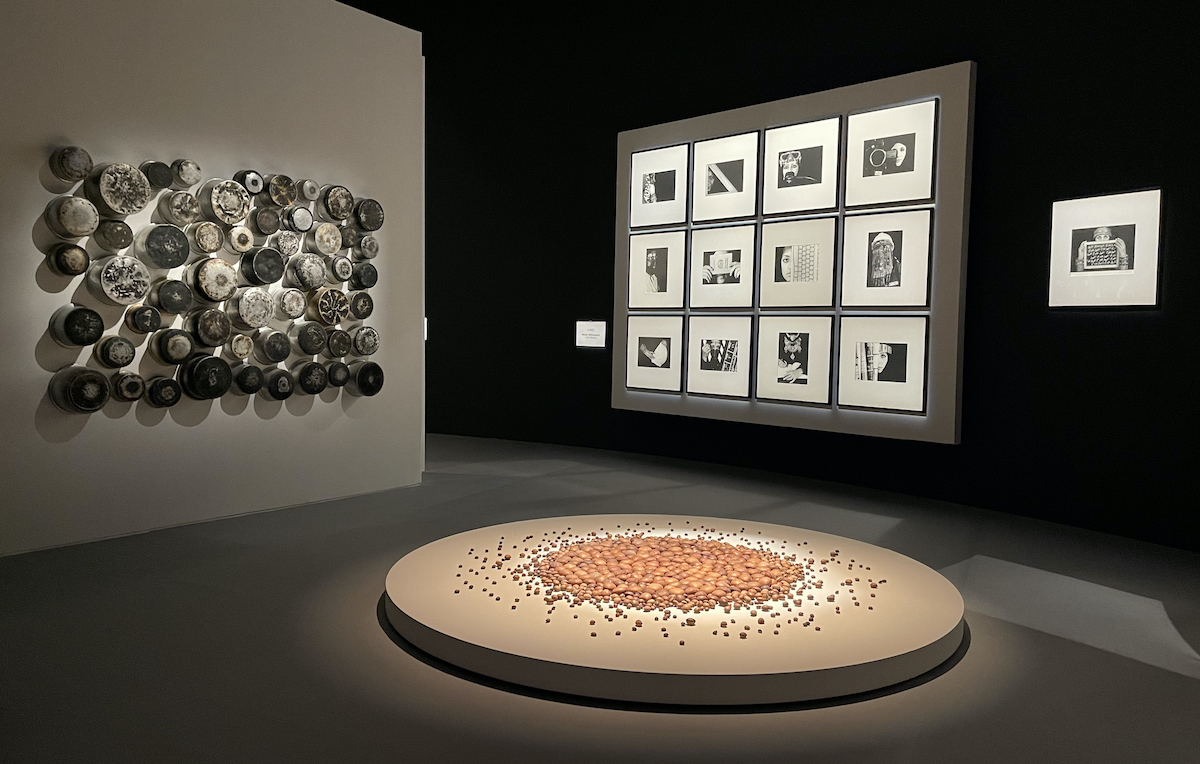
BASMOCA
You mentioned this very interesting initiative that actually you started already over 10 years ago, the virtual museum BASMOCA. Can you tell us more about that? It was quite mind-blowing or avant-garde actually that a decade ago you already built a virtual museum. What was the motivation? How did you have this idea back in 2011?
In around 2010, I noticed that numerous collectors were starting to open their own private spaces or museums. As I travelled, I began to feel more and more that as other people were sharing their collections, I wanted to do the same. I actually wanted to do it in my home country, to be local; but logistically, at that time, it was impossible to do it. I started to look for alternative ideas, and I considered producing pop-up shows, amongst many other models. Then, I came across a technology which was at its early inception and was only provided by one platform called Second Life, through which you could buy and build whatever you wanted on that virtual space. With my team, we bought a space with the Second Life platform and had an “architect” to build the virtual museum, and the software also allowed users to create avatars. But – given it was so early in the development of this technology – we ultimately found that it was not strong enough to support our vision.
So, in 2011, we created our own platform, the BASMOCA World with the BASMOCA Museum, which is basically metaverse: it is a virtual space in a 3D world, where people, in the form of avatars, can meet, look at art, appreciate, and even discuss art. And this is how it all started! Since then, we have kept on running BASMOCA like any other physical museum. Every two years, we would have a show with international curators; one time it was curated by the Institut du Monde Arabe (Arab World Institute). Alongside the new shows, we of course also have the permanent collection.
Today, 10 years down the line, I am extremely proud because whilst you now find a lot of museums online, finding one where you can create your own avatars is rarer. Our platform combines two kinds of technology – virtual reality and gaming technology – so it allows you to move your avatar around the space, to look at the art, and click on the art to find out more information. It’s not just a point of view, where a camera takes you around the space; it is immersive and interactive at BASMOCA, and this is what has kept it exciting.
Throughout this decade, the technology must have evolved. Would you briefly tell us how was this experience for the past 10 years?
It was very interesting and challenging because the actual functioning of a system like this needs a lot of support — technical support, and also feedback from the visitors who go through the experience. Even now, there is still a barrier around technology for some people, so we always try to simplify things every time we do an update. Additionally, the system has changed between Apple iOS and Android, so we have to adapt in that way as well. But ultimately, we keep on evolving to keep in line with the latest developments. The thing I’ve always found most exciting is that, for example, someone in China and someone in America can literally, with a click of a button, meet in the same space, talk about art, look at art together — this is the real beauty of the whole thing.
Right, thanks to the technology facilitating this kind of instant exchange, people can share ideas immediately without traveling, without all the hustles, time, and cost of travel. I believe that was also part of your motivation to share your collection to a greater audience, wasn’t it?
Yes, and to create conversations, because open dialogue builds bridges and facilitates greater understanding, shared thoughts and ideas. In my opinion, culture is really clever in shining a light on places, on people, and on history. I believe this is the way forward; art and culture are very important in our time. Art changes the way we see the world, and opens our minds and our ways of thinking, to new perspectives.
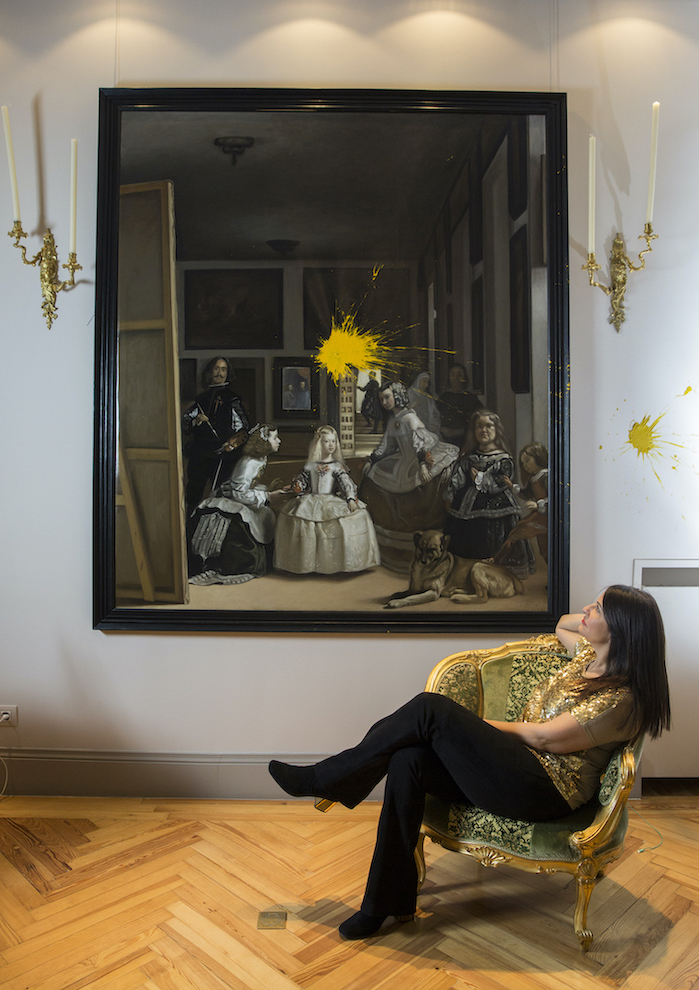
Definitely, and it’s part of the treasure of humanity. And then what is your vision for BASMOCA and your art collection in the upcoming years?
For BASMOCA, we have been talking with our tech company to update the system, to think of something new for the future of BASMOCA — we’re discussing NFT’s, other kinds of cutting-edge technology, and new ways of looking at art.
Meanwhile, I will continue building both collections, the international and the Saudi. The current show – “What Lies Within” – has started my journey with physical exhibitions, and I would love, one day, to have my international collection touring Saudi Arabia, or to even loan it to a local museum. We are currently going through a lot of changes in Saudi Arabia, and there are many new things happening in the arts sector. We are all thrilled with the changes because there is increased support for cultural infrastructure and resources. It’s a really great moment to work closely with different initiatives to build on that momentum.
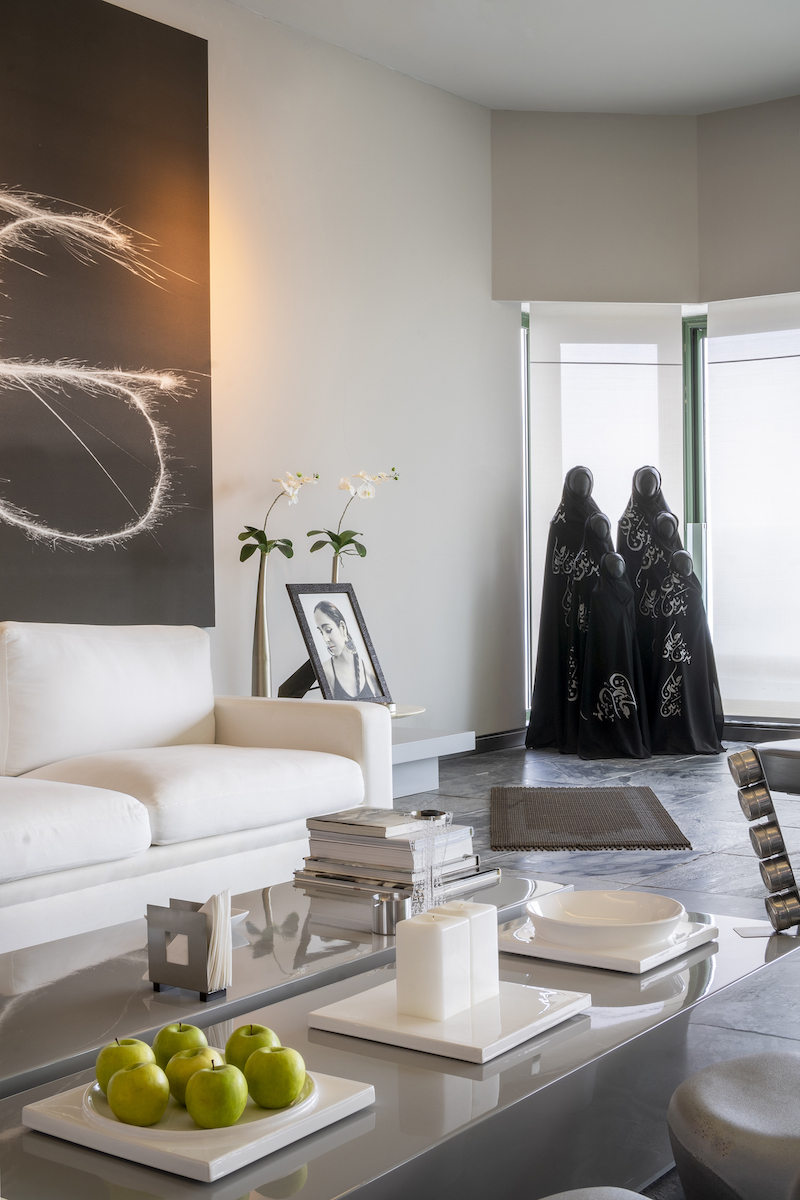
From Saudi Arabia
What is your advice to art collectors who are interested in collecting Saudi artists?
The first and most important thing, in my opinion, is that they have to come and visit. No matter how much I could tell you about the art scene here, you have to come to properly understand the culture, the spirituality, the customs, the traditions, for the art to then make sense. You cannot fully appreciate Saudi art without exploring the context. I would, therefore, urge collectors to come and experience it, they are more than welcome, and Saudi is a beautiful country. We have talented artists who are producing amazing works that are absolutely worth collecting.
Yes, I believe so. And nowadays Saudi artists linked their creation closely to their cultural tradition and identity, right?
Yes, very much so, but each individual has his/her own new perspective. There is now a healthy ecosystem that is ideal for Saudi artists to prosper, and there are many young people who are becoming interested in art — who’ve started studying art, either locally or abroad. There is an explosion of talent and interest in different media: photography, performance art, paintings, etc. It’s a very interesting moment right now from a cultural point of view.
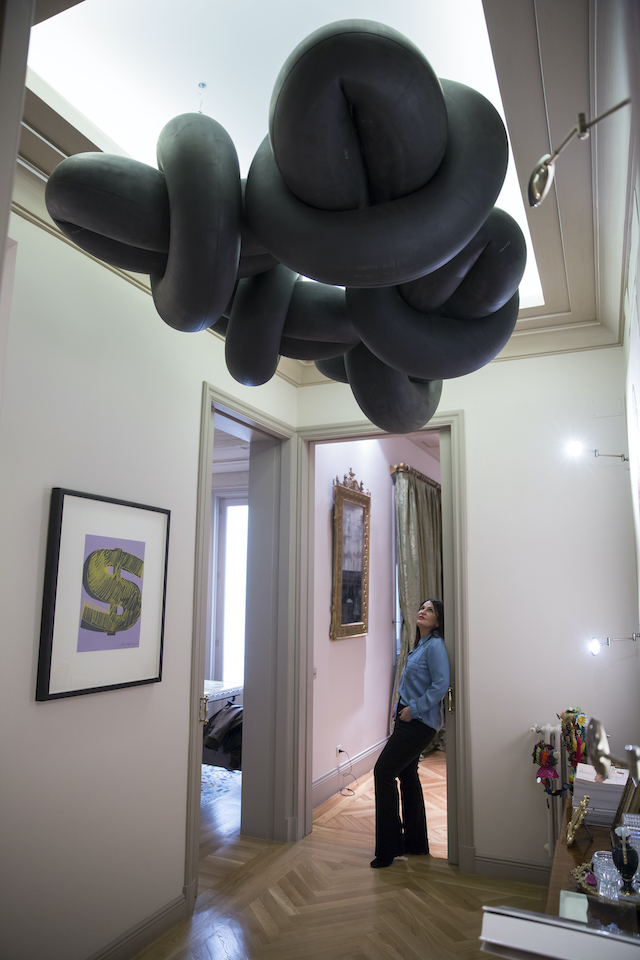
So now we are talking about Saudi artists, and have mentioned a younger generation of them. Are there some emerging Saudi artists that you think our audience should definitely pay attention to?
Definitely. I can think of, firstly, an amazing performance artist called Sarah Brahim, who had one of her beautiful works in the the Diriyah Contemporary Art Biennale, the first Saudi biennale that just started recently, and is still on. I also have my eye on a young painter called Alia Ahmed. There is additionally Sultan bin Fahad who does very interesting conceptual art. He’s also currently presenting one of his works in the Biennale as well as at Desert X AlUla. I’m sure these up-and-coming artists will have an amazing future.
Anything that you would like to add to our conversation or to tell our audience?
The most important thing is just to say that the art scene is still at its beginning here. It is almost 60 years since we introduced art into the school curriculum in 1957. It is a young seed, but it is now establishing a solid foundation. The artists are really diverse, creating works from varied perspectives, and we have a lot of exciting talent amongst the emerging artists. More widely, the changes that we are going through culturally are, of course, helping a lot to build the strength of the art scene. It feels as though we’re embracing every possibility right now – I am sure this is just the beginning, and there will be much more to come.
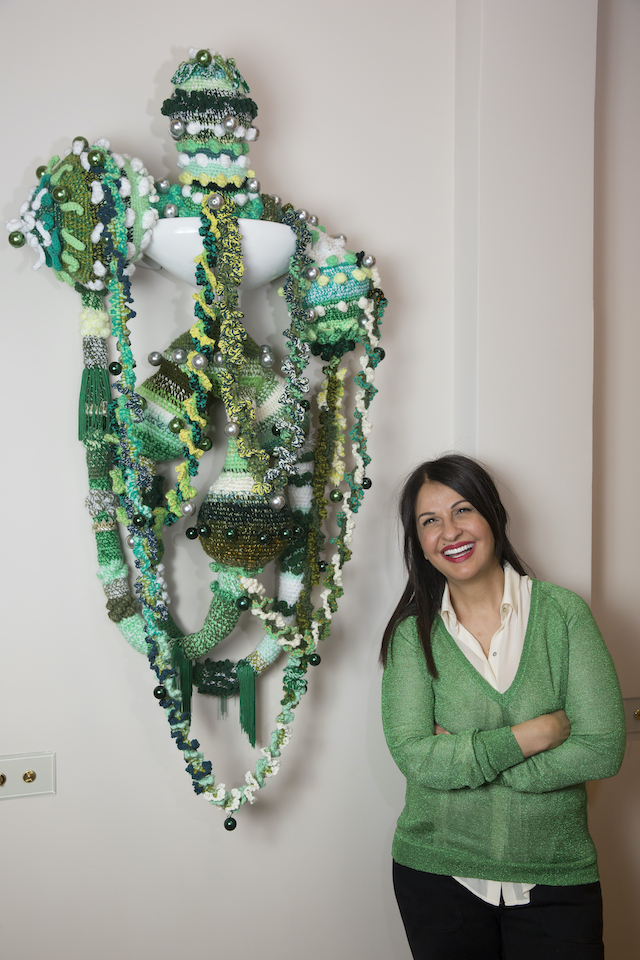
Current exhibition: “What Lies Within” is open until 20 March at Maraya, AlUla
Related: BASMOCA
Instagram: @basmoca
A selection of artists Basma collects:
Bassim Alsharqi
Hussein AlMohasen
Maha Malluh
Manal AlDowayan
Zahrah AlGhamdi
By Ricko Leung





